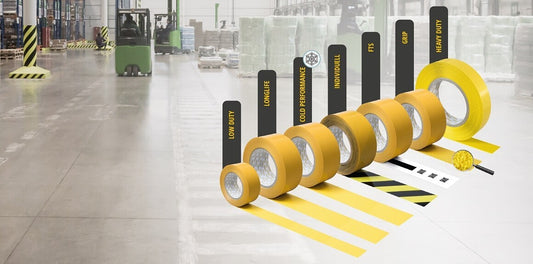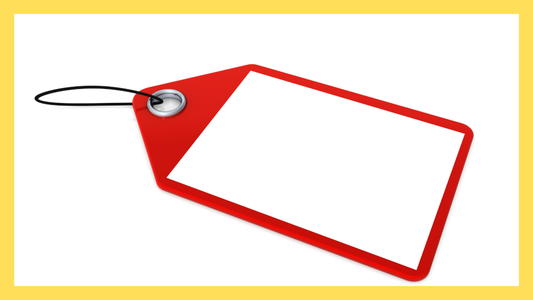Managing projects can involve various methods and philosophies, such as Agile Management and Lean Management - but how do you know which is best for your business?
Whilst they both bring benefits to industries such as manufacturing, logistics and software development, each has differing methods that provide businesses with these benefits. In this blog we look at the methods and benefits to help you decide which is right for your bsuiness.
Lean Management Vs. Lean Management Visualised
Agile Management offers an iterative approach to bringing projects in on time and within budget, where methods can be applied or changed according to demand. Lean Management is an approach where needless processes are reduced, making the project lighter, easier to understand and cost less over time.
| Lean Management | Agile Management | |
| Change | Limited | Embraced |
| Workflow | Continuous | Iterative |
| Focus | Process | People |
| Emphasis | Reducing Waste | Working Software |
| Used To | Deliver Value | Manage Uncertainty |
Lean vs. Agile: The Differences
Lean Management and Agile Management share some similarities in that they both attempt to manage change. However, they are distinct methodologies that can be used independently of one another.
Lean Management relies on certainty to be able to operate. With Lean, it's important to prioritise providing value to your customers. Avoid any actions that do not contribute to their overall satisfaction.
To achieve this, start by mapping out your team's workflow from start to finish, including work carried out by external sources. This will help you understand which activities are beneficial and which ones are wasteful of time and resources.
Once you have this understanding, streamline your workflow to eliminate bottlenecks and unnecessary approval stages. Additionally, only create work when there is a demand for it.
Finally, strive for perfection, knowing that Lean principles are best implemented as a continuous process.
Lean Management Methodology
Lean Management is an approach to managing an organisation or business that focuses on continuous improvement. It systematically strives to improve processes by making small, incremental changes over a sustained period of time. To do this, Lean Methodology lays out its core tenets.
1. Identify your value: Provide services that add value at all times to meet your customers' needs. Any action that does not contribute to the customer's satisfaction should be avoided.
2. Map the value stream: Examine the workflow of your team from beginning to end. Take account of the work done by each member (and any outside sources) to gain an understanding of which activities are beneficial and which may be wasteful. Doing this will help you to recognise what provides value and what doesn’t.
3. Create flow: Streamline and refine your workflow, identifying things like bottlenecks or unnecessary approval stages that could slow things down.
4. Establish pull: Only create work when there is a demand.
5. Seek perfection: Lean management isn't something that can be achieved and forgotten about. Since it utilises continuous improvement, its methodology requires revisiting and refining the workflow. Even if there haven't been any significant changes, it's still essential to assess the current state of things because there's always room for improvement. Tasks and workforces are always evolving, which is why it's crucial to keep up with them and make any necessary adjustments.
The Benefits of Lean Management
The benefits of Lean Management are varied, however, the main benefit of implementing Lean is the reduction of waste. When correctly implemented, Lean Management benefits production cycles by avoiding waste at all costs to maximise time working in the warehouse. Doing so increases productivity, and reduces anything that doesn’t add value to the product once it is received by the customer. In a ‘Lean’ system, waste is considered to be:
- Defective products
- Inventory waste
- Excessive processes
- Over-staffing
- Overproduction
- Excess internal movement
Any reduction of the above wasteful practices is considered to be making your company more Lean and would contribute towards a Lean Methodology. Once a Lean system is in place, small incremental improvements are encouraged.
Encouraging incremental improvement is at the heart of Lean Management, where businesses constantly strive to improve over time, reducing waste as they go.
Downsides to Lean Management
Whilst Lean Management has been theorised as early as 1971 by a production official at Toyota, it does have some noted downsides. These include:
- It can take a long time to implement
- Lack of strategy unless implemented correctly
- Just-In-Time methods can leave you without parts during logistical issues
Unless you thoroughly implement changes to your workplace, Lean Management can lead to insufficient stock for times of need. This can occur during labour shortages, issues with suppliers or inventory errors.
Read more about Just-In-Time Methodology and Just-In-Case Methodology in our blog What is Just-in-Time Manufacturing; Is it Useful?

Agile Management
Agile Management is a methodology created in the early 90s by software developers to help them overcome changing issues they found whilst working on a project. Agile Management ensures feedback can be acted upon quickly and that responsive changes can be made at each stage of a product cycle. This allows staff to adjust to ever-changing requirements and conditions within agreed budgets and timeframes.
Over 30 years later, this method has moved outside of software development and has become popular in the manufacturing and logistics industries.
In manufacturing and logistics, businesses are needing to adapt and change from previously outlined and established goals (such as the ones set at the beginning of a project) and allow collaborative actions and change to be promoted.
The Benefits of Agile Management
The benefits of Agile Management are often noted as benefitting a team by:
- Increasing flexibility
- Increasing autonomy
- Increasing adaptability
To be able to achieve these benefits, Agile Management models need to receive feedback from their customers and make changes accordingly.
The creators of Agile Management set out their manifesto on Agile Management in their website Manifesto for Agile Software Development, which claims;
“Individuals and interactions over processes and tools
Working software over comprehensive documentation
Customer collaboration over contract negotiation
Responding to change over following a plan”
The State of Agile Report is a questionnaire filled out by over 3000 applicants to assess which Agile Management system they use. Over 87% of respondents claimed to use a methodology called ‘Scrum’, whereby larger projects are broken down into smaller tasks called ‘sprints’.
This ability to constantly change and develop is great for software engineers, but how does it relate to the industries of logistics and manufacturing?
Downsides to Agile Management
Whilst the benefits of Agile Management are noted above, implementing it as a methodology in manufacturing or logistics can have its downsides. These are:
- Less predictable: The flexibility at the heart of Agile Management leaves teams in a predicament where their work is less predictable, which can cause feelings of stress and frustration.
- Lost time to communication: The constant communication between client and worker can be time-consuming which can cause lost time and productivity.
- Greater demands on developers and clients: Commitment from all team members involved is required for Agile Methodology to be effective. Any team member who isn’t contributing may fall behind.
- Lack of necessary documentation: Because tasks are often completed just in time for development under the Agile Method, documentation tends to be less thorough. This can lead to misunderstanding both internally and externally.
- Projects can easily fall off track: The less-structured nature of Agile Methodology means projects can easily go astray or run beyond the original scope or timeframe of the project.
Lean Vs. Agile: The Similarities
Despite these differences, Lean and Agile Management strategies do have many areas of overlap. These areas are:
- Quick delivery: Both methods break work down into smaller, easier-to-understand ‘sprints’ or areas of focus to help teams assess workload. They also rely on constant communication between internal and external collaborators as well as customers.
- Continuous Improvement: Both systems rely on continuous improvement created by teams engaging with feedback and actioning on audits of internal processes. Both methods also rely on this engagement with internal assessments to improve efficiency.
- Teamwork: Both systems of management also promote strong team communication and collaboration, whilst also promoting autonomy.
Lean & Agile Manufacturing or Logistics Management With Orgatex
If you decide to implement Lean or Agile Management across your organisation, then why not get in touch with Orgatex for a free consultation?
For everything else, including a wide range of equipment and tools created especially for the implementation of Lean Manufacturing and Logistics, including visual boards, flexible indexing signs, insert boards, and instruments for material supply.












